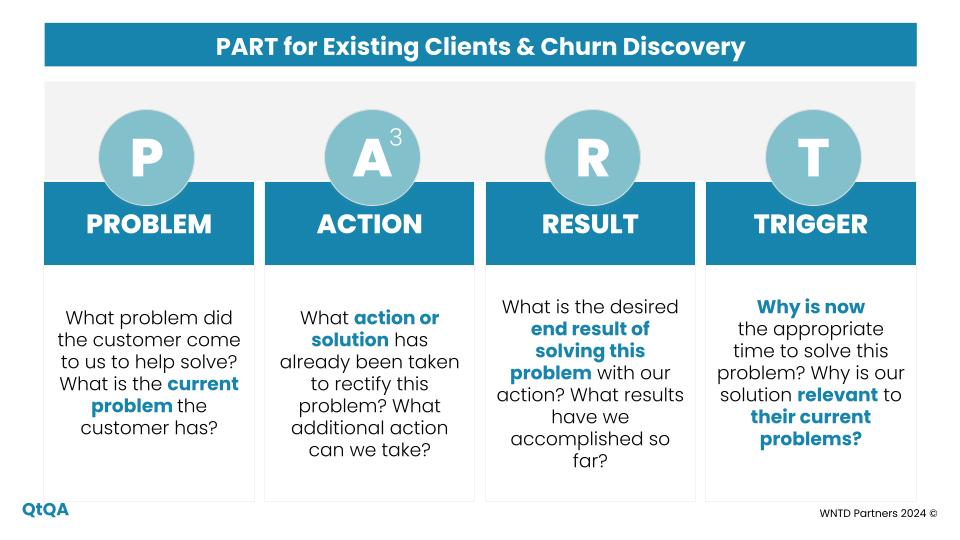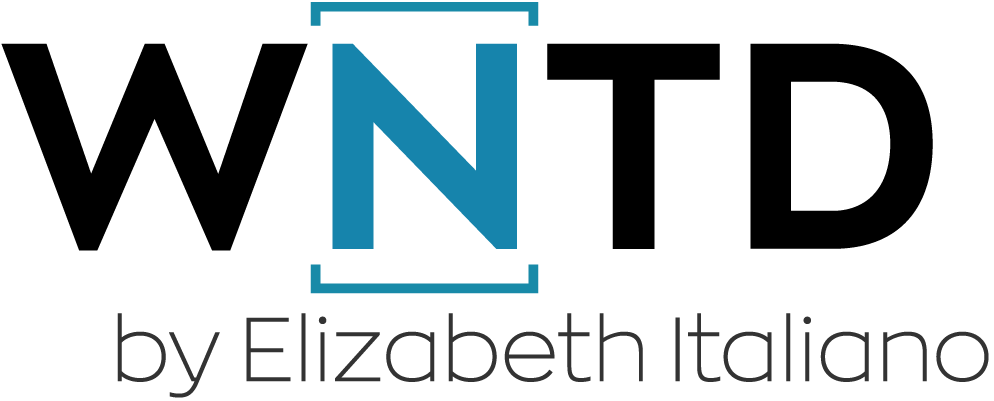In a never-ending quest for the holy grail formula or shortcuts to revenue increase, in today’s climate we are definitely seeing an abundance of sales and client engagement frameworks and methodologies. However, most of these frameworks are quite exclusive, designed only for sales or only for customer success.
And this has not served customers well.
Often, we assume that because there is a common language and framework that covers the full revenue cycle, it can be applied across the entire revenue organization, but this is not the case. Often, there is key information that gets lost in translation from the pre-sales to the post-sales teams. As a result, the client experience suffers, as do renewals and expansion growth over time.
In our previous post, we introduced our buyer and customer enablement framework, PART, which stands for Problem, Action, Result, and Trigger. If you missed it, I highly recommend you review that post to get the full context of why we created PART and how we apply it across sales and customer success.
In this post we demonstrate how to leverage PART for onboarding and the change management that is often required in order to successfully gain buy-in and client adoption.
Client adoption is critical if we want to ensure the longevity of our client relationships, and ultimately, no negative surprises at renewal time. Think about how many times a client failed to adopt a perfectly good solution because the ‘end users’ or new main point of contact resisted change.
So, how do we combat the status quo in CS and get clients to embrace change, right from the point of onboarding?
It starts with identifying the problems that end users are facing in their roles and with the current state, then identifying the compelling reason(s) to adopt the new solution now. This will help put your onboarding engagement and communication in a context that will resonate with your clients. It also means conducting really strong discovery and engagement with our new stakeholders during the kickoff and onboarding.
We use the PART framework to do this.

PART helps us understand the user’s CURRENT state: why they would consider changing their status quo, but also why (potentially) they would resist change. Remember, the end users are usually not involved in the sales cycle, so they may not always be convinced there is a need for change. While sales typically gain buy-in from the buying committee, it’s now our job in CS to gain buy-in from those who use the product daily.
We need to understand:
What is their current Problem, how have they been tackling it, what was the result, and why is it important to do something different now? This is part of successful change management and getting further buy-in. This is the first step of building advocates vs detractors.
For example, imagine I’m a CSM for a company called RevIntel, working with a marketing technology company, MarTech Co, to drive adoption of our call recording and revenue intelligence solutions.
This might look like:
Problem: MarTech’s CS team struggles with disjointed communication and inconsistent documentation of customer interactions. Without a unified system, important details get lost, leading to misaligned follow-ups and fragmented customer experiences. Reps are frustrated by the time-consuming manual processes.
Action: The CS team continues to rely on old methods, such as manual note-taking, scattered email threads, and no single source of truth for customer interactions.
Result: The reliance on outdated methods has resulted in missed follow-ups, duplicated efforts, and a lack of actionable insights from customer conversations. This has caused customer frustration and reduced adoption, renewal rates, and expansion efficiency.
Trigger: With a new upcoming product launch, CSM teams need to streamline their processes as their workload will increase. They also need to capture critical customer insights, drive successful adoption, and hit their new CSQL targets.
Notice that RevIntel and our solution aren’t even in the focus yet. This is all about MarTech Co and the end users’ current state. By focusing on the user’s current problems and outcomes, we can effectively engage in a way that gets buy-in from those who need to embrace change and fully integrate our solution into their workflow in order for us to achieve adoption and renewal.
Then we can move onto us: what does the action with us look like, and what would the result be? This will help us gain early adoption by our customers.
In future posts, we will share how we apply PART to Success Plans, churn risk discovery, renewals, expansion and more. If you find this content valuable and are eager to learn more about applying PART across the buyer and customer journey, check out our on-demand Quest to Quota Attainment course here. The course is comprehensive but broken out into short modules, making it easy to complete in either short time chunks by taking one module at a time, or within a couple of days if you’d prefer to take multiple modules at once. Learn more here. The ROI will be your commission cheque.




